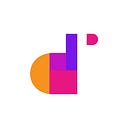This article is the first part of The Jira Project Reporting Academy, so, welcome. We’re talking about a series of articles that will show you how to build a dashboard of project reports in Jira using the integration between eazyBI and Projectrak for Jira (formerly Profields), as it’s the most effective and organic way to centralize project data and visualize it.
Throughout the 4 lessons you’ll learn:
- How to set Projectrak as a source for project and cross-project information in eazyBI.
- How to combine issue-level information with project-level information.
- How to create powerful and memorable visualizations.
- How to build reports that help you track your project portfolio.
You can see more information about the Jira Project Reporting Academy, here.
In this first lesson, we’ll explain how to create the first report on eazyBI with data from Projectrak. Every article is designed as a step-by-step guide. By enrolling in the Academy, you’ll additionally receive a DIY Checklist to help you create your own set of project reports, independently of my particular choices.
In future classes, I’ll show how to create different graphs and grids to represent Jira+Projectrak information and combining them into a dashboard that helps you with project planning and decision-making. Here’s the full syllabus:
- Keeping your budget under control.
- Combining different project variables in one chart.
- Creating Gantt chart views of your project portfolio.
- Entering different charts in a project Dashboard.
If you’re a newbie…
You can start by discovering how to leverage the Atlassian marketplace to transform Jira into a project tracker. Independently of whether you are a project manager, a product manager, or any other type of role with Jira projects, you should know that Projectrak will help you centralize and manage your project-level data.
For example, you can store important information about your projects, including:
- Budget.
- Start Date/End Date.
- Time spent.
- Team members.
… or any additional information required at project-level we need.
The immediate win is to have that information displayed in the Project Navigator.
With good data comes good Reporting
Having information that is accurate and permanently updated is important, but probably not an end in and of itself. The real need is… reporting.
Put succinctly, one of the main needs of a project manager is:
To have reports that can be used to keep projects under control
It’s so easy to miss something important in a project when you’re not the only person running it! Additionally, your boss will likely want to see objective data about the project that explains how the project is doing and whether it will be successful.
That’s why having a dashboard like this is the dream for every project manager: with it, anyone can see the evolution of a project at a glance and take corrective actions when needed.
Why eazyBI?
There’s a bunch of reporting apps in the Atlassian marketplace, but eazyBI is the must-have tool for Business Intelligence: it’s flexible, versatile, and sophisticated.
If you ever get lost with eazyBI (particularly if you don’t follow my exact steps because you want to implement different metrics), feel free to browse eazyBI’s amazing documentation. Here’s the article on the main terms and concepts.
Combining eazyBI with Projectrak, project managers are allowed to:
- Read information from Jira and use it for Business Intelligence.
- Leverage information about your projects from Projectrak to create reports for projects and cross-project levels.
- Enjoy the visual cues of different kinds of charts.
- Combine multiple dimensions in one chart to create new insights and compare.
Ok, to get started with what’s probably the most important dimension for controlling projects, click the button below and start your journey with the Jira Project Reporting Academy:
